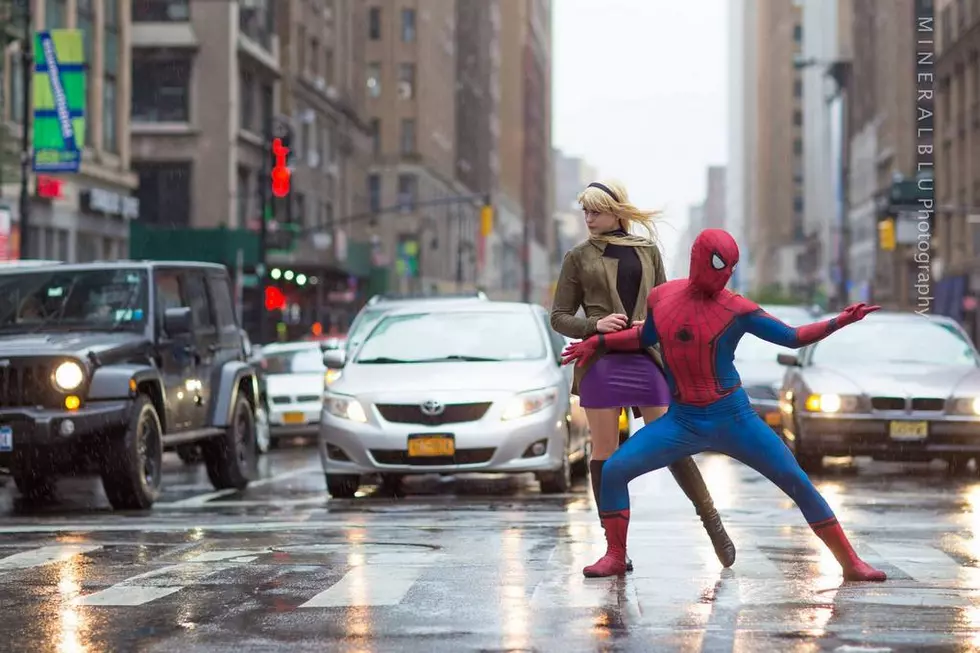
Unsung Hero of the ’90s: A Celebration of Gerard Jones
If you know Gerard Jones from his work this century, you probably think of him as a comics and pop culture historian. And he fills that role well in books like Men of Tomorrow: Geeks, Gangsters, and the Birth of the Comic Book and Killing Monsters: Why Children Need Fantasy, Superheroes and Make-Believe Violence. But in the late '80s and early '90s, he didn't just write about comics, he wrote comics, notably for Marvel, DC, and Malibu. And he was one of the most important comic book writers in an era that's remembered primarily for its artists.
Gerard Jones was born on July 10, 1957, in Cut Bank, Montana, but was raised in California. In the 1980s he was a humor writer for National Lampoon alongside Will Jacobs. Jacobs and Jones made the jump to comics together, writing a humor comic for Malibu titled The Trouble with Girls, about a supposed everyman named Lester Girls who finds himself walking into '80s action movie plots around every corner.
Jones arrived at DC with a book titled El Diablo, co-created with Mike Parobeck. El Diablo took his name from a DC Western character, but lived in the contemporary Southwest, and was a rare Latino superhero with his own comic.
From there Jones was given control of the Green Lantern franchise, which was pretty much defunct in 1990. It was Gerard Jones who revived a then-retired Hal Jordan and set him up alongside John Stewart and Guy Gardner as the three central Green Lanterns of Earth. He also brought back the Guardians of the Universe, and introduced a new Green Lantern Corps.
It's easy to forget that this era of Green Lantern even happened because so much of it was wiped away by Emerald Twilight a few years later --- something Jones had a hand in, but has said was made much darker than he would have liked by editorial edict --- and had to be revived years later by Geoff Johns. But for a generation of kids who were reading comics at the time, this was what made Green Lantern matter. It's certainly impossible to imagine John Stewart being one of the stars of the the animated Justice League if Gerard Jones hadn't worked so hard to make him interesting.
And Jones didn't just write Stewart in the Green Lantern book. Green Lantern: Mosaic was a spin-off focusing on John Stewart and his stewardship of a patchwork world made up of cities from across the galaxy. The title, written by Jones with art by Cully Hamner, was a fascinating mix of the usual Cosmic DC mythology with a heavy dose of early-Vertigo-inspired thoughtful weirdness. It explores not just the relationships between humans and aliens, but the conflicts within John Stewart's own mind, and what makes him different from Hal Jordan. It only lasted 18 issues, but it's well worth revisiting.
Adjacent to the Green Lantern titles, Jones also took over writing Justice League Europe after the end of the Giffen/DeMatteis era. Alongside Dan Jurgens on Justice League America, he ushered in the League's return to more traditional superheroics, without entirely abandoning the light-hearted tone that made the previous era so popular. The reintroduction of characters like Green Lantern and Aquaman to the League set the stage for Grant Morrison's "big seven" revival a few years later.
Over at Marvel, Jones teamed artists Jeff Johnston and Terry Austin to helm a solo series for Avengers mainstay and Hollywood superhero Wonder Man. Simon Williams never quite broke through as a superhero in his own right, but the closest he ever came was with the aid of Jones' unique mix of humor and heroism. The series is fondly remembered by those who read it, and by whatever fans Wonder Man still has.
Gerard Jones also co-created Prime with co-writer Len Strazewski and artist Norm Breyfogle for Malibu's much-hyped Ultraverse line. Prime was basically DC's Captain Marvel reimagined for the '90s, which is to say he's Captain Marvel but considerably grosser and more morally nebulous. Young Kevin Green doesn't magically transform into a perfect adult like Billy Batson did. Instead he projects liquid flesh from his body and uses it to become an over-muscled exaggeration of a superhero, and must then learn to navigate a world of complicated adult choices.
With Wonder Man canceled, the Ultraverse falling apart after Marvel bought out Malibu, and of course DC systematically destroying everything he built on Green Lantern, it's not hard to understand why Gerard Jones chose to move on and spend his time writing non-fiction prose. But during his tenure in comics he did some of the best superhero work of that era, and left behind an impression on the characters he wrote that has affected everything that came after.
More From ComicsAlliance









